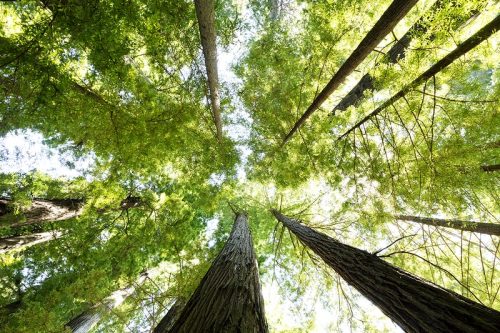
Source: photographytalk.com
My husband, Charles, tried his hand at nature photography just last year, and it puzzled me then. Sure, he has always loved communing with nature – he can almost instantly distinguish a type of bird from the shape of the nest and the color of its feathers. But Charles has gone through anxiety and was also diagnosed with Attention Deficit Hyperactivity Disorder. He is over-energetic, and he finds it hard to focus and sit still.
This is why I found it strange that he preferred to be quiet and still in a peaceful bird hide for several hours, concentrating on feeding the birds so that he could take pictures of something enchanted on his camera.
Most of us often believe that we must stop and look directly at nature for us to benefit from nature. However, Charles discovered that wildlife and nature offer therapeutic photography.
The Healing Effects
He is not the only one reaping the benefits of nature photography. Liz Brewster, a doctor at Lancaster University, studied the connection between mental health and photography. She studied the impact of sharing and capturing images on individuals who reported a range of diagnoses and those who were not diagnosed with anything at all.
After her study, she established that nature photography could be valuable for all forms of mental health problems. She claims that it permits mastery of practical skills, offers a creative outlet, and takes much focus and patience, especially for wildlife and nature photographs. She adds, “I believe there is something relevant in that. It decelerates us amidst this quick-moving society.”
A participant in the study of Dr. Brewster describes how she felt. She says that nature photography forced her to take another view of the world. She also added that taking photos is a postural thing. When a person is depressed or anxious, he is often looking down or hunched over. Taking photos of nature encourages you to position your head up, or perhaps squat down and view something extraordinary, like ‘stopping and smelling the flowers.’

Source: rawpixel.com
An Essential Part Of Healing
Photography alone is beneficial, but when it is mixed with nature and wildlife, it appears to have even more benefits. Tony Darwin from California is diagnosed with anxiety and clinical depression and has experienced several mental breakdowns, two of which have resulted in hospital admissions. He utilizes landscape, wildlife photography and guided imagery as an essential aspect of his healing. He says that unraveling a passion for nature and photography is a therapeutic thing for him.
Tony describes getting out of the hospital for the second instance. He became agoraphobic and didn’t want to leave his house. “My mom encouraged me to commune with nature by visiting the gardens, turning on the timer to take selfies with the nature around me, and jotting down the ways of how I felt while I was there.”
He felt more comfortable and eventually more relaxed to go out of his house, slowly increasing his time until he was strolling down the nearby beaches. On the beach with the blue waters and clear skies, just being there made him feel amazing. When he began capturing images of his walks, he discovered that focusing on that exact moment provided him some headspace, and his frustration and anxieties eventually disappeared.
The Social Aspect
Aside from the therapeutic effects of being outdoors and viewing life from a different angle, Dr. Brewster’s study also revealed some social benefits of nature photography. She reports that people who tried their hand at photography projects established better connections and relationships. This is perhaps achieved through photo sharing and social media interactions and through getting together with members of the photography community.
According to Dr. Brewster, most individuals can use captured images to open up about aspects of their lives that they find challenging to talk about, including mental health issues. “Photography,” she says, “can be a vital kind of self-care.”
The doctor’s study entailed photography of all types, but she observed that nature and wildlife photography appears to bring certain benefits. A participant diagnosed with cancer explained elaborately how he had been capturing images of garden plants and birds and how this has altered his entire routine. She claimed that discussing her long walks on the forests and coasts and taking pictures of these amazing creatures seemed to give her peace and healing.

Source: photographyconcentrate.com
Discovering Calm Behind The Camera
Nature photography can surely be appreciated alone, and be paired up with online therapy, but getting into a photography community can provide more social opportunities that could be therapeutic and beneficial. Broken Light Collective is a group created by Danielle Hark, a professional photographer based in New York. He has an online gallery that is devoted to individuals who were affected with mental health conditions. Danielle went through major depressive bouts and had discovered that photography was an effective instrument that helped her go through life with lesser pain and misery. She then created Broken Light Collective to inspire others to try their hand at photography as well.
You could take a leisurely walk taking spring hues using your latest iPhone lens or simply nestle in the lakeside with a Nikon, just waiting for an hour or two for that egret to do its first catch. Either way, it appears that nature and wildlife photography therapy can navigate you serenely into the moment. All you need to do is to step outdoors to reap its benefits.
